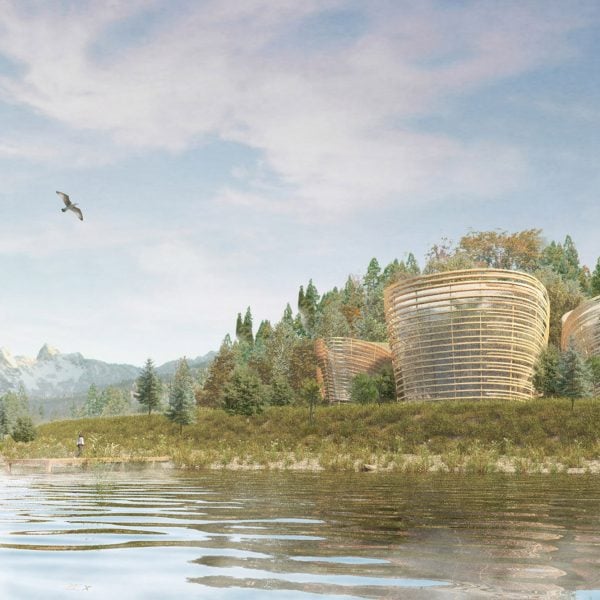Dezeen School Shows: a proposal for micro housing which promotes sustainability is included in this latest school show by students at the University of Waterloo.
Also included is a botanical garden which includes education initiatives and a proposal for a food security system through combining a greenhouse with a food bank.
Institution:University of Waterloo
School: School of Architecture
Course: Bachelor of Architectural Studies (BAS) and Master of Achitecture (MArch)
Tutors: David Fortin, Rick Haldenby, David Correa, Jaliya Fonseka, Terri Meyer Boake, Lola Sheppard, Scott Sorli and John McMinn
School statement:
“The University of Waterloo School of Architecture is an internationally respected architecture and design school dedicated to educating the best architects in the world.
“Set on the Grand River in historic downtown Cambridge, Ontario, in Canada, the School of Architecture is a source of design inspiration.
“Our campus, housed in a carefully restored 1920s silk mill, features an award-winning library, art gallery, cross-disciplinary maker spaces, fitness facilities, eateries and student services.
“During the fourth year, students spend a term abroad studying at our campus in Rome, Italy.
Our pre-professional Bachelor of Architectural Studies (BAS) degree immerses students in the culture and practice of design.
Students develop an understanding of the workings of society and culture, the principles of physics, the materials and techniques of construction, human interaction with the natural and built environment, historical processes, critical thought and diverse forms of creative expression.
“The Master of Architecture (MArch) programme provides students with a unique opportunity to create an individual research and design thesis while completing the required coursework for professional accreditation.
“Under the guidance of faculty with internationally recognised expertise, students can explore diverse topics in architecture, landscape, urbanism, technology, sustainability and fabrication, among other topics.”
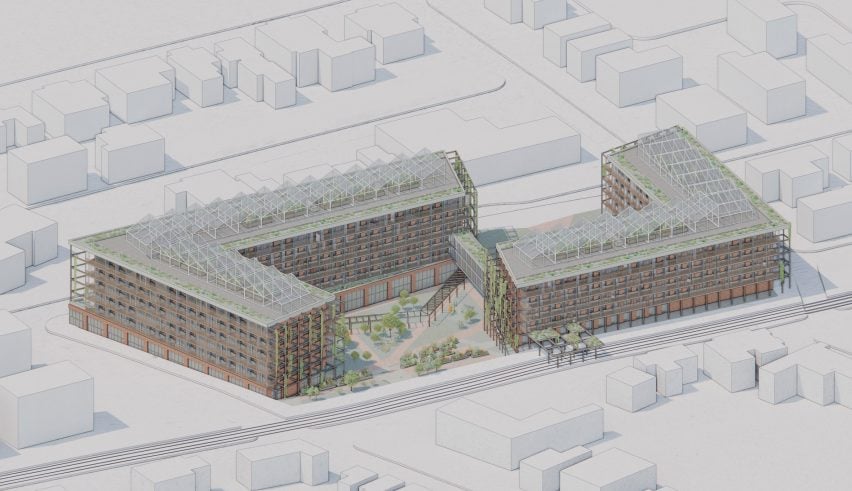
Crop Co-op by Roksolana Ozerianska
Crop Co-op’s sustainability philosophy integrates sustainability in human activity, human living and building construction.
“It balances affordability and quality of life by focusing on practical efficient solutions.
“Sustainability in human activity emphasises collective food growing and consumption, supported by a rich social program.
“In living, sustainability is achieved through a six-bay unit module that allows for unit mix flexibility.
“In construction, the modular building structure is designed for disassembly, enclosed in a repetitive ‘perfect box’ envelope and wrapped in a self-supported sunroom system to minimise thermal bridging and maximise simplicity.”
“Initial design completed by Roksolana Ozerianska, Kimia Safdarzadeh and Athena Walker.”
Student: Roksolana Ozerianska
Course: ARCH392 – Design Studio
Tutor: David Fortin and Rick Haldenby
Email: rozerianska[at]uwaterloo.ca
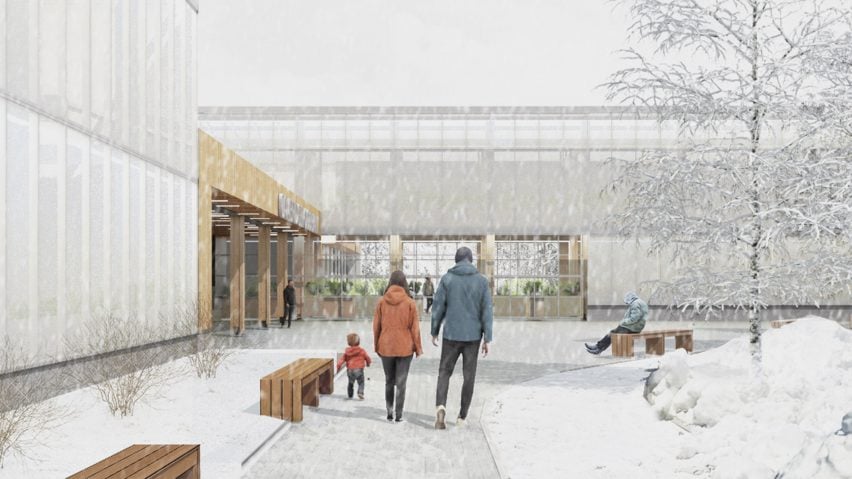
Grow by Madeline Engen
“Grow proposes a genuinely circular architecture addressing pressing social needs, joining a production greenhouse with the not-for-profit Cambridge Food Bank.
Beyond their natural programmatic symbiosis, the programmes promote food security by engaging local communities in food production; additional education programmes and spaces leverage the greenhouse as a living classroom.
“Beyond programming, each of the building’s components are conceived as integral parts of a circular process.
“Its hay-bale walls are sourced from agricultural waste; mechanical systems recirculate heat from the greenhouse; rainwater captured in a cistern becomes effective solar mass and food waste is composted on-site for the many productive gardens.”
Student: Madeline Engen
Course: ARCH 493 – Comprehensive Building Design Studio
Tutor: Jaliya Fonseka
Email: mhengen[at]uwaterloo.ca
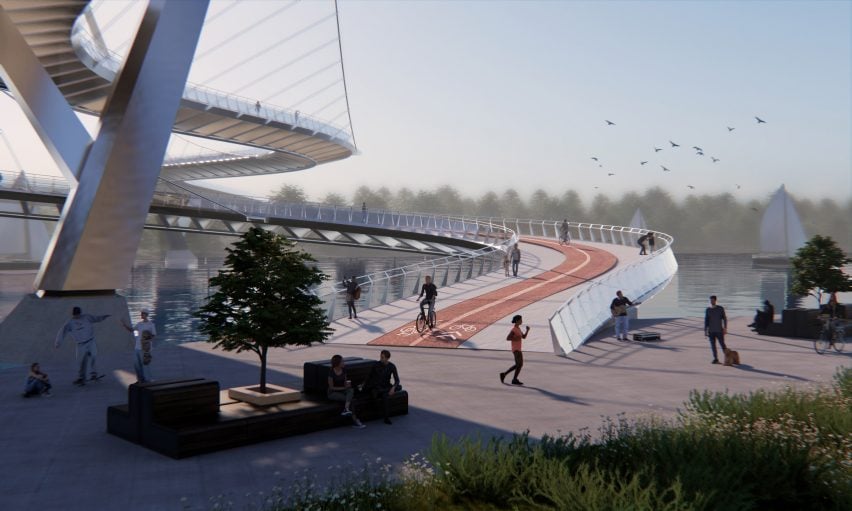
Knot-ical by Sarah Abdulkarim, Michael Salib and Naya Sanchez
“The Knot-ical Bridge connects Halifax’s South End with Armdale, saving residents commute time, expanding the city’s green network and reaffirming public waterfront access.
“The bridge draws inspiration from Halifax’s sailing traditions, featuring a design reminiscent of billowing boat sails.
“Three strategically placed masts offer unique viewpoints and experiences along the pathway (ramp from the lower elevation of Sir Sandford Fleming Park, observatory deck and built-in seating areas).
“This innovative structure not only serves as a necessary connection between points in Halifax but also enriches the public realm, inviting people to enjoy the city’s scenery and heritage from a new perspective.”
Students: Sarah Abdulkarim, Michael Salib and Naya Sanchez
Course: ARCH 570 – Architecturally Exposed Structural Steel Design
Tutor: Terri Meyer Boake
Emails: sabdulka[at]uwaterloo.ca, m7salib[at]uwaterloo.ca and nsanchez[at]uwaterloo.ca
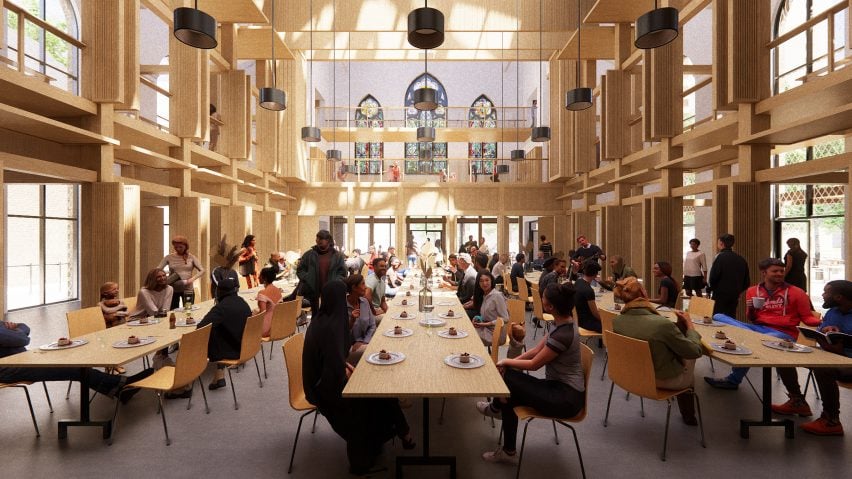
Parkdale People’s Palace: Rethinking a Heritage Church as Revitalised Social Infrastructure by Matthew Dlugosz
“This thesis explores how a church building in disrepair can be transformed into a socially relevant space for its community through architectural adaptation.
“In the context of South Parkdale’s gentrification and commitment to equity, the thesis proposes transforming Bonar-Parkdale Presbyterian Church in Toronto into a community food hub.
“By integrating new spaces and programming, the church can become a social infrastructure asset, offering renewed relevance and connectivity.
“This thesis argues for the intersection of heritage and social infrastructure, empowered by community ideals, to create socially constructive futures for Toronto’s declining church buildings.”
Student: Matthew Dlugosz
Course: Master of Architecture (MArch)
Tutor: Lola Sheppard
Email: matthew.dlugosz[at]uwaterloo.ca
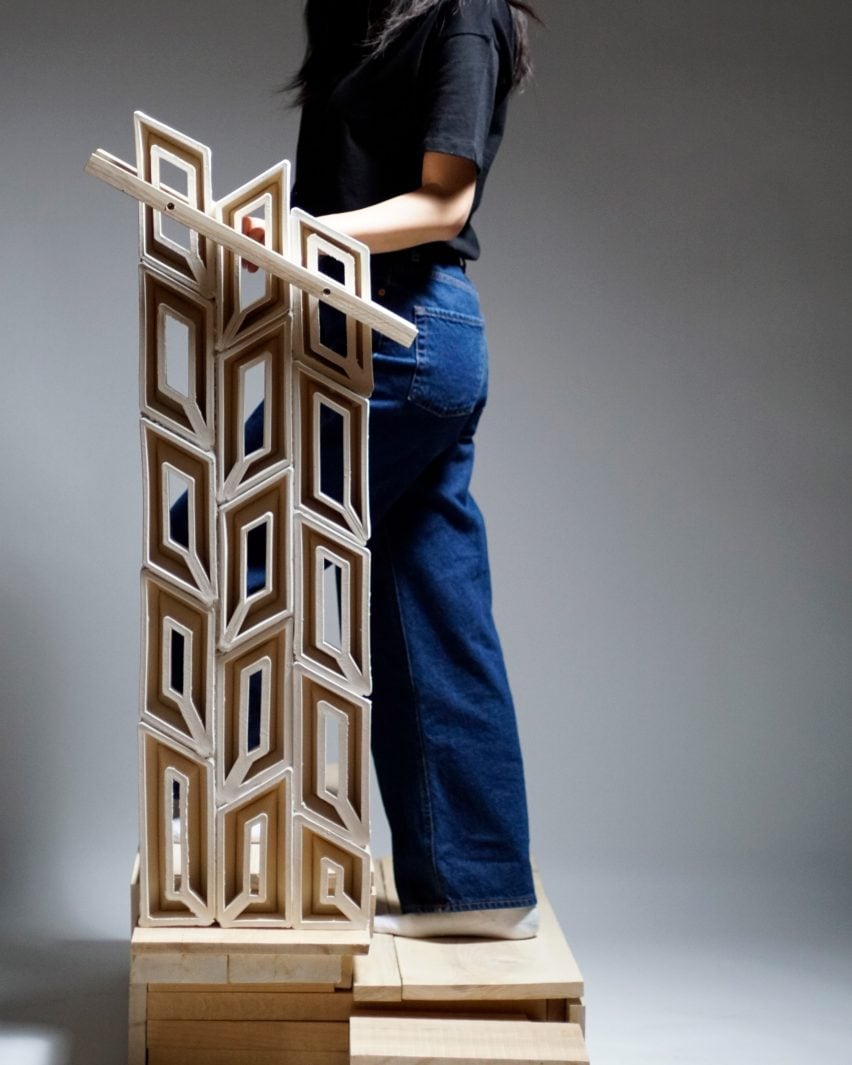
Step by Step by Phillis Yang, Leanne Li and Matthew Baker
“Step by Step weaves ceramic craft into an architectural element activated by the user through movement and touch as they ascend or descend.
“Our brick module is a double sided, universal experience that allows the inside face to cast sharp angular shadows within the negative space while the outside face are angled planes joined together with varying sizes of the centre aperture.
“When mortared and assembled similar to a conventional brick wall, the stair is presented with formal rhythm and an optical effect, creating a new poetic experience and appreciation for stairs and for its details and joinery.”
Students: Phillis Yang, Leanne Li and Matthew Baker
Course: ARCH 520 – Material Syntax
Tutor: David Correa
Emails: phillis.yang[at]uwaterloo.ca, l567li[at]uwaterloo.ca and m37baker[at]uwaterloo.ca
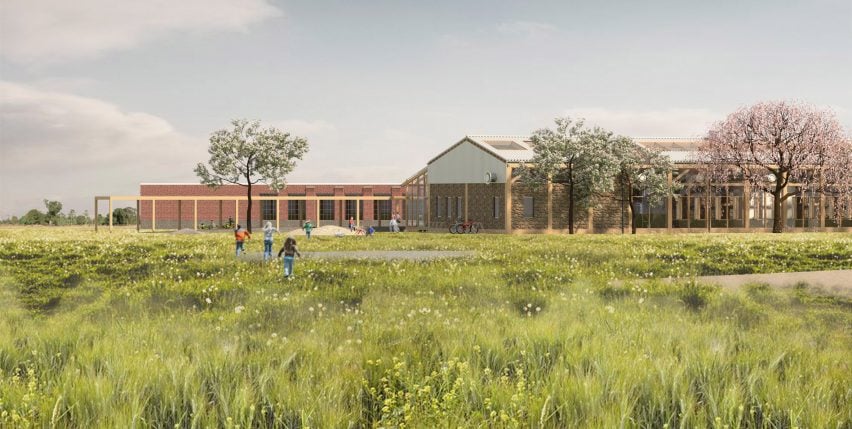
Stonehouse: more than a foodbank by Yoon Hur
“Stonehouse reimagines the Cambridge Food Bank as an architectural typology woven into the urban fabric as a communal hub, rather than being pushed to the margins.
“Cambridge Food Bank’s motto, ‘more than a food bank’, is embodied in the proposal, fostering a space that provokes timeless sensorial curiosity.
“As one walks through the space enclosed by rhythmic timber frames and welcoming stonewalls, Stonehouse reveals the enduring symbiotic relationship between the locally sourced and reclaimed materials, paying homage to the city’s architectural heritage and the former industrial site.
“Here, materiality transcends building science, becoming an agent of history, sustainability and belonging.”
Student: Yoon Hur
Course: ARCH493 – Design Studio/Comprehensive Building Design
Tutor: Jaliya Fonseka
Email: yoonhurr[at]gmail.com
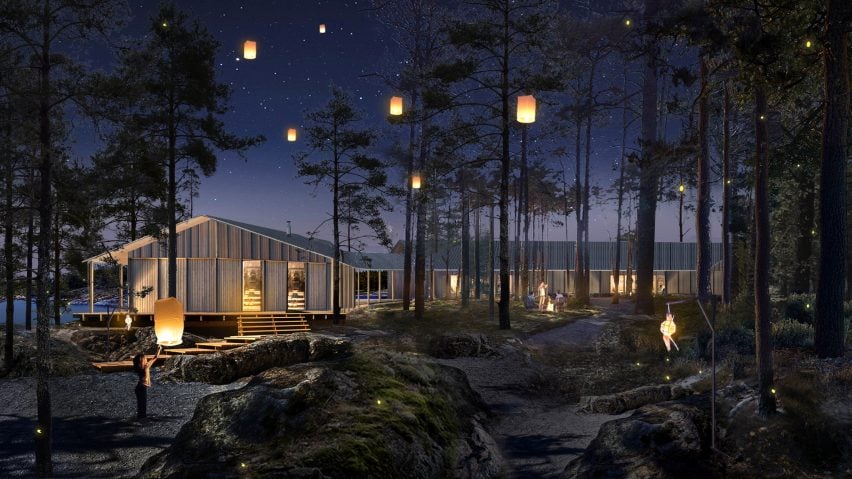
Camp Glenn by Sophie (Jinhong) Rioux
“Architecture for grief requires adaptability and variability; in a death-denying society, emotional landscapes rarely encounter public space.
“Camp Glenn is a lodge designed for bereaved children and teenagers, providing a therapeutic environment to learn essential coping skills, meet people with similar experiences and memorialise their loved ones.
“Flowing through the Canadian Shield, the riverside stratum is a passageway.
Natural and constructed landscaping elements allow campers to retreat and rejoin the program without dictating the course of transitional grief phases.
“Camp Glenn provides agency and compassion, helping its visitors find community, support and solace after loss – uncovering life after life.”
Student: Sophie (Jinhong) Rioux
Course: ARCH 293 – Landscape Design Studio
Tutor: Scott Sorli and Lola Sheppard
Email: j3rioux[at]uwaterloo.ca
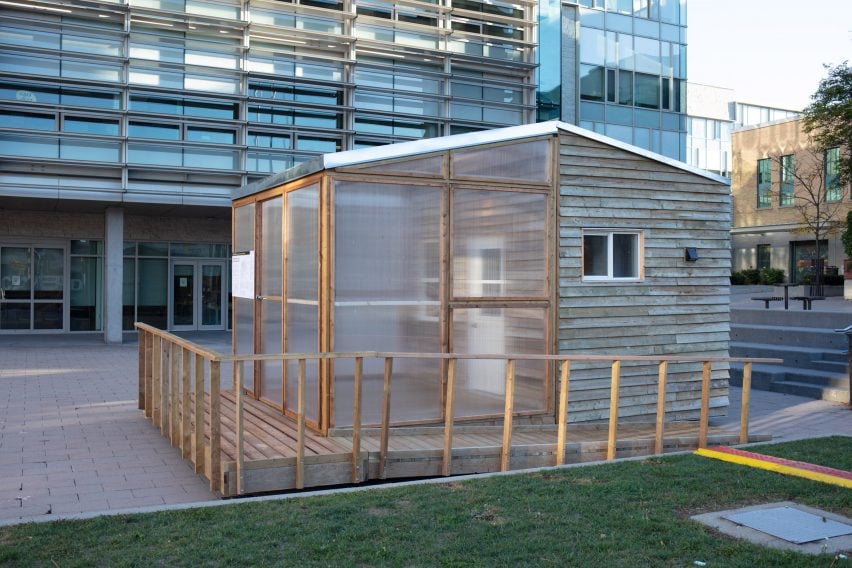
Micro-housing for affordability, flexibility and sustainability by architecture students
“This studio is focused on housing insecurity in the Waterloo Region and explores the potential of low-cost, small-scale building that could be widely deployed as a means of quickly created, much needed housing, for a growing segment of our communities.
“The studio explores the principles of design, technology and fabrication of small dwellings, whose modest size, mobility and economy can play a key role in addressing the acute housing crisis both regionally and nationally.
“The studio will design an approximately 190-square-foot tiny home in Ontario.
“This course runs as part of the Grand Studio Design Build program at the School of Architecture, which has dual focus of creating alternative housing in the Kitchener-Waterloo Region as well as cultural infrastructure projects in collaboration with local Indigenous communities.
“The program offers students the opportunity to carry through designs from preliminary research, to concept design, construction documents and the building of full-scale permanent structures, in collaboration with community groups, putting design education into practice, for architecture that can create tangible change for people in our surrounding local communities.”
Students: Multiple
Course: ARCH 393: Micro-housing for affordability, flexibility and sustainability
Tutor: John McMinn
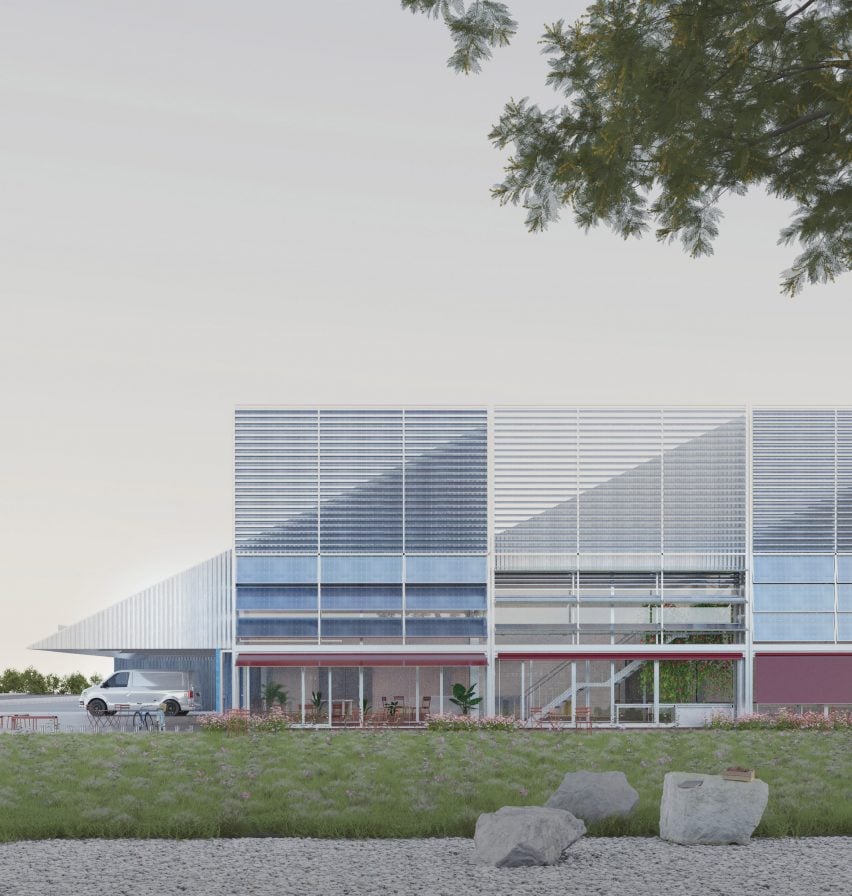
Cambridge Food Bank by Cian Hrabi
“The Cambridge food bank project recognises its industrial surroundings as valuable contextual material to be referenced and physical material to be used in the new construction.
“The new building is a light steel frame single-story structure located at the front of the site, with one existing building retrofitted to become a conditioned community centre and farm storage space.
“From demolition, brick walls are re-used as floor finishes, concrete block used as interior partitions and steel recycled.
“A photovoltaic shading screen is erected on the south facade, creating a distinct building face and enabling a fully-glazed facade while maintaining an efficient thermal envelope.”
Student: Cian Hrabi
Course: ARCH 493 – Design Studio/Comprehensive Building Design
Tutor: Jaliya Fonseka
Email: cian_m_h[at]mit.edu
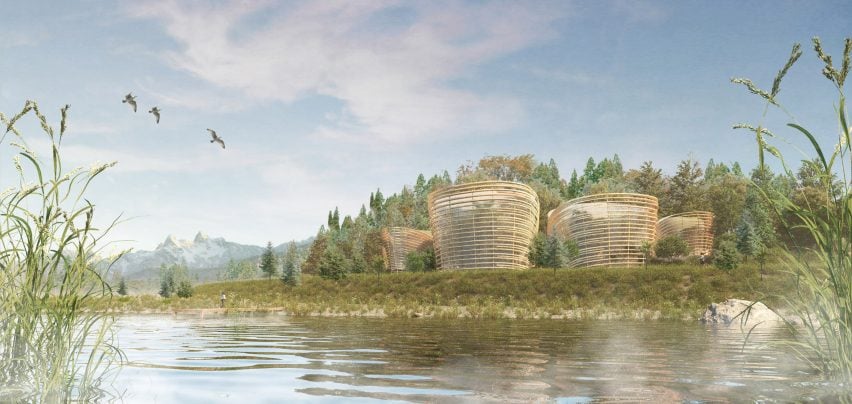
Gill Gardens by Audrey Chen, Simone Darveau and Kailing Mai
“Located on the UBC campus and adjacent to secondary and elementary schools, Gill Gardens aims to be a collaborative, hands-on botanical garden centred around learning and engaging with nature.
“This project explores an innovative architectural solution by upscaling adaptive wood bilayer systems, inspired by the hygroscopic actuation of the Button Mushroom.
“It intends to create a climate-responsive louvre system that leverages the inherent properties of American White Beech for controlled shape-changing transformations, based on fluctuations in relative humidity at a seasonal scale.
“This offers a biomimetic and material-centric alternative to conventional kinetic facades.”
Students: Audrey Chen, Simone Darveau and Kailing Mai
Course: ARCH393 – Biomimetic Design Lab
Tutor: David Correa
Emails: a277chen[at]uwaterloo.ca, klmai[at]uwaterloo.ca and sdarveau[at]uwaterloo.ca
Partnership content
This school show is a partnership between Dezeen and the University of Waterloo. Find out more about Dezeen partnership content here.

